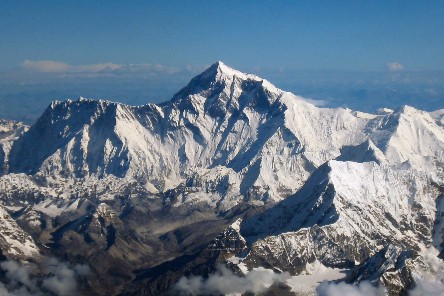Spanish mountaineer Alex Txikon has returned from Nepal after an unsuccessful attempt to become the first person to summit Everest in winter without supplemental oxygen.
Everest has not been climbed at all in full winter (between Dec 21st and March 20th) since the first winter ascent by Polish mountaineers Cichy and Wielicki in 1980, and is still yet to see a winter ascent without bottled oxygen.
Other climbers have reached the summit in winter, but they all started their expeditions well before Dec 21st. The extreme cold and very high winds make such an attempt extremely difficult and dangerous.
Txikon has previously summited eleven 8000ers, including making the first winter ascent of Nanga Parbat in winter 2016. He had previously attempted Nanga Parbat in 2015 and was part of two winter expeditions to Gasherbrum I in 2011 and 2012.
Alex Txikon’s team for his attempt was made up of: mountaineer and extreme skier Carlos Rubio (28); film director and producer Aitor Bárez (40); and cameraman and mountaineer Pablo Magister (27). In addition, they hired fives Sherpas to fix the route through the Khumbu Icefall.
The team decided to take the normal route via the South Col, and began their expedition on Christmas day. This meant they arrived in base camp in the first week of January. They had allowed a month for fixing the route up to Camp 2 (6400m), which proved fortunate, as their progress was hampered by hurricane-force winds, meaning a number of days of enforced rest in basecamp.
However, by January 11, Txikon, Rubio, and the Sherpa team had established the route up to 5800m, just below the traditional Camp 1 site.
Txikon commented: “You have to carry a lot of weight and the terrain is technical, difficult and demanding.” But once the weather had improved slightly, the second push could begin, and despite persistent strong winds and biting cold, by January 27 the team had managed to fix the route up to 7800m.
Unfortunately, such an expedition always carries high risk, and on January 18, the team was struck by tragedy when the liaison officer, Padang Jung Rai, died due to complications related to altitude illness. Rubio also had to be evacuated from the mountain due to a lung infection.
On February 10, the climbers set out on their summit push. They climbed in two teams: one made up of Alex Txikon, Nurbu Sherpa and Cheppal Sherpa, and a second group of Sherpas – Nuri, Pemba and Furbas – who started a day later.
The first team made it to Camp 4 at the South Col (7950m), but, unable to set up a tent due to strong winds, were forced back to Camp 3, where they tried to wait for the storm to subside. Unfortunately it never did, forcing them to retreat.
After spending ten days in Kathmandu and waiting in base camp for another ten due to bad weather, Alex Txikon decided to go for a final summit push in early March. But it proved impossible, as the weather window wasn’t good enough for a proper summit attempt. This meant that after climbing to Camp 2 and waiting one night there, they were forced to turn back. “It really would have been suicide to go on,” Txikon commented. “As the head of the expedition, I should not endanger the lives of my companions. And not my own.”
So, with the weather set to only get worse in the following weeks, Txikon and his team decided to end the expedition.
“Although I feel very strong physically and psychologically, the winter hasn’t given a truce, the strong wind tossed us to the ground and the forecast of the next few days is terrifying,” he explained. However, he may have been defeated this time, but the Spaniard is not a man to give up easily.
Txikon says he is very keen to come back for another attempt next year, writing on his website: “there is no doubt that it has been the most special expedition of my life, in which I have been surprised by myself ….I promise you that I will return to the mountain that has stolen my heart in the purest way…This isn’t a goodbye, it’s a ‘see you later’.”

